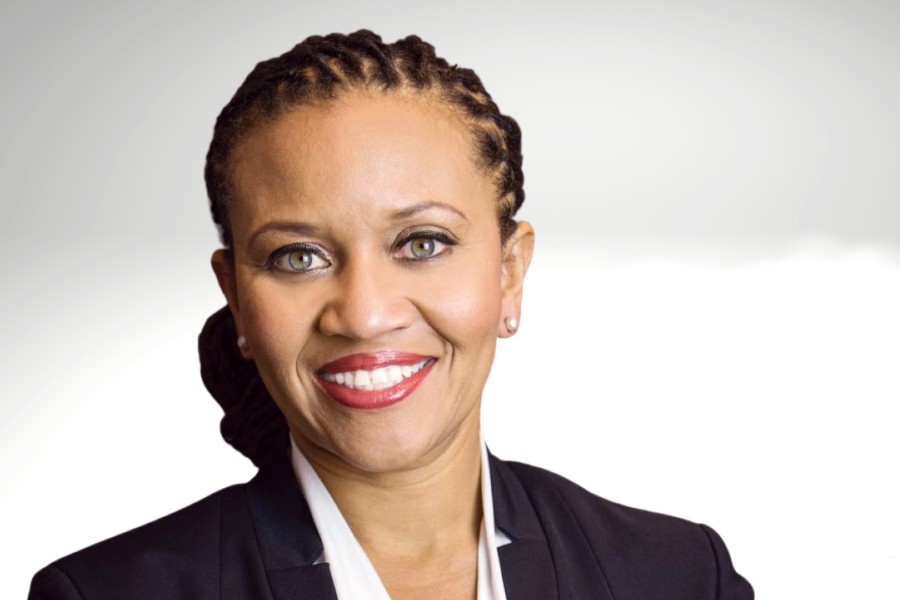
New York City Mayor Eric Adams today unveiled a new initiative as part of his administration’s historic “City of Yes for Housing Opportunity” proposal.
The proposal will create tens of thousands of affordable homes in areas of the city that many working-class New Yorkers are unable to afford. An outdated restriction on new residential construction — also known as the floor-to-area-ratio (FAR) cap — currently limits the number of new homes that can be built in certain high-demand areas of the city, such as Midtown Manhattan. As state lawmakers consider lifting the FAR cap, the Adams administration is proposing a new zoning tool to allow for even more density of residential buildings while simultaneously mandating the creation of permanently affordable housing across the city.
“New Yorkers need relief from the housing and affordability crisis, and they need it now,” said Mayor Adams. “As someone who grew up on the edge of homelessness, I know firsthand that safe, secure, and affordable housing is critical to the prosperity of any working-class New Yorker. As we announce new, bold initiatives, I am urging lawmakers at every level of government to join us in our efforts to meet this moment and deliver homes that New Yorkers need and deserve.”
“Our housing crisis has been so long in the making, and the severity of our crisis is now so dire, that to change the trajectory of this problem, we need to do everything, everywhere, all at once,” said Deputy Mayor for Housing, Economic Development, and Workforce Maria Torres-Springer. “By proposing brand new residential districts that require permanently affordable homes, we are demonstrating, yet again, that New York City will continue to take bold action to meet the moment and we call on our partners across all levels of government to do the same.”
“The outdated FAR cap prevents affordable housing from being built where it’s needed most, particularly in central areas of Manhattan with great access to transit, jobs, and amenities. By creating new high-density, residential zoning districts with Mandatory Inclusionary Housing, New York City will be ready to act as soon as Albany lifts this cap,” said New York City Department of City Planning (DCP) Director and City Planning Commission (CPC) Chair Dan Garodnick. “Additionally, our new rezoning lookback reports are a timely reminder that we must tackle our housing crisis with an equitable, city-wide approach, and that’s exactly what these new zoning districts will help us do.”
“A citywide housing crisis requires a citywide approach, and the ‘City of Yes for Housing Opportunity’s’ commonsense solutions will address the root causes of rising housing costs by adding permanently affordable housing opportunities through zoning,” said New York City Department of Housing Preservation and Development Commissioner Adolfo Carrión Jr. “With a record low vacancy rate, now is the time for the bold action we need to address the historically uneven approach to housing production and create housing in every neighborhood across the city.”
“Addressing the affordability challenges our city is faced with requires action from every level of government and the ability to build more housing in every neighborhood of the five boroughs” said Executive Director for Housing Leila Bozorg. “Ensuring we are ready to move on pending state action to lift the FAR cap, along with other bold ideas in our ‘City of Yes for a Housing Opportunity’ proposal, means we’ll be a step closer to delivering permanently affordable homes in neighborhoods that have historically been inaccessible for many New Yorkers.”
The Adams administration’s ambitious proposal needs state lawmakers to lift the FAR cap in order to be enacted. Once the cap is lifted, pending City Council approval of the City of Yes for Housing Opportunity plan, new residential projects undergoing a rezoning could benefit from this new tool — which would enable residential projects to build up to 15 or 18 times their lot size — and build significantly more housing on their site. Under the administration’s proposal, new housing projects will be required to build permanently affordable housing through Mandatory Inclusionary Housing. Mandatory Inclusionary Housing requires that 20 percent to 30 percent of the housing in a development is affordable to New Yorkers earning an average of 40 percent to 80 percent of the area median income.
Underscoring the urgent need for new tools to spur the creation of new housing, DCP today also released a set of “rezoning lookback” reports, examining 15 neighborhood rezonings that were enacted in 2009 and how zoning changes impacted local housing production. The reports show that when policymakers enacted more restrictive zoning in low-density neighborhoods, housing production, effectively, stopped, and that new housing productions was concentrated in select areas of the city. The reports shed new light on the need to build more affordable housing across the five boroughs.
In addition to calling for the state to lift the FAR cap, the administration has continued to call for lawmakers in Albany to create new tools this legislative session to help the city build more affordable housing, including passing a new affordable housing tax incentive, a tax incentive to turn empty office buildings into affordable homes, and a pathway to make basement and cellar apartments safe and legal.
City of Yes for Housing Opportunity is the most pro-housing set of zoning changes in New York’s history. These changes includes lifting arbitrary and costly parking mandates for new residential construction; the Universal Affordability Preference, a bonus allowing roughly 20 percent more housing in developments, so long as the additional homes are affordable; transit-oriented development and Town Center zoning, which would allow three-to-five story apartment buildings to be built near transit and along commercial corridors; and allowing homeowners to add accessory homes like backyard cottages.
DCP is currently undertaking environmental review on the proposal and will refer it for public review by community boards and borough presidents later this spring. It is anticipated to come before the CPC and the New York City Council for a vote before the end of the year.
To accelerate housing production and deliver relief to New Yorkers, the Adams administration has advanced a number of creative solutions, including laying out an office conversion accelerator to advance conversions more quickly; unveiling new proposed rules to streamline approvals for sustainable housing; and debuting several pilot programs to help fund the creation of accessory dwelling units, help move New Yorkers out of shelters and into renovated apartments, and help fuel mixed-income developments in neighborhoods across the city; among other innovative efforts.
City of Yes for Housing Opportunity is the third of the Adams administration’s three “City of Yes” initiatives to update New York City’s zoning laws for a more sustainable, prosperous, and affordable city. The first — “City of Yes for Carbon Neutrality”— was adopted by the City Council in December. The second — “City of Yes for Economic Opportunity” was approved by the CPC on March 6 and is being considered by the City Council.
Photo credit: HWM.
Become a Harlem Insider!
By submitting this form, you are consenting to receive marketing emails from: Harlem World Magazine, 2521 1/2 west 42nd street, Los Angeles, CA, 90008, https://www.harlemworldmagazine.com. You can revoke your consent to receive emails at any time by using the SafeUnsubscribe® link, found at the bottom of every email. Emails are serviced by Constant Contact








